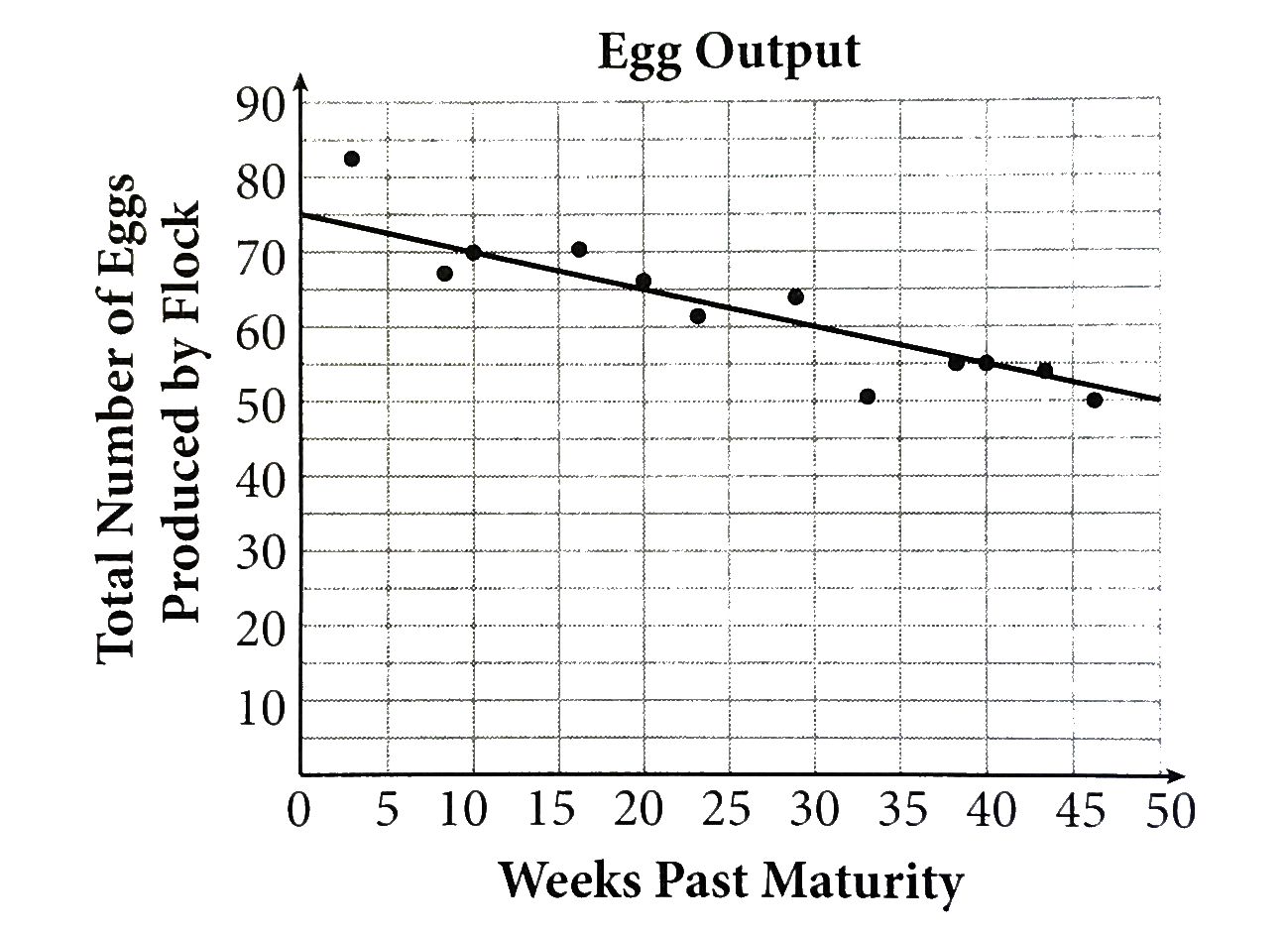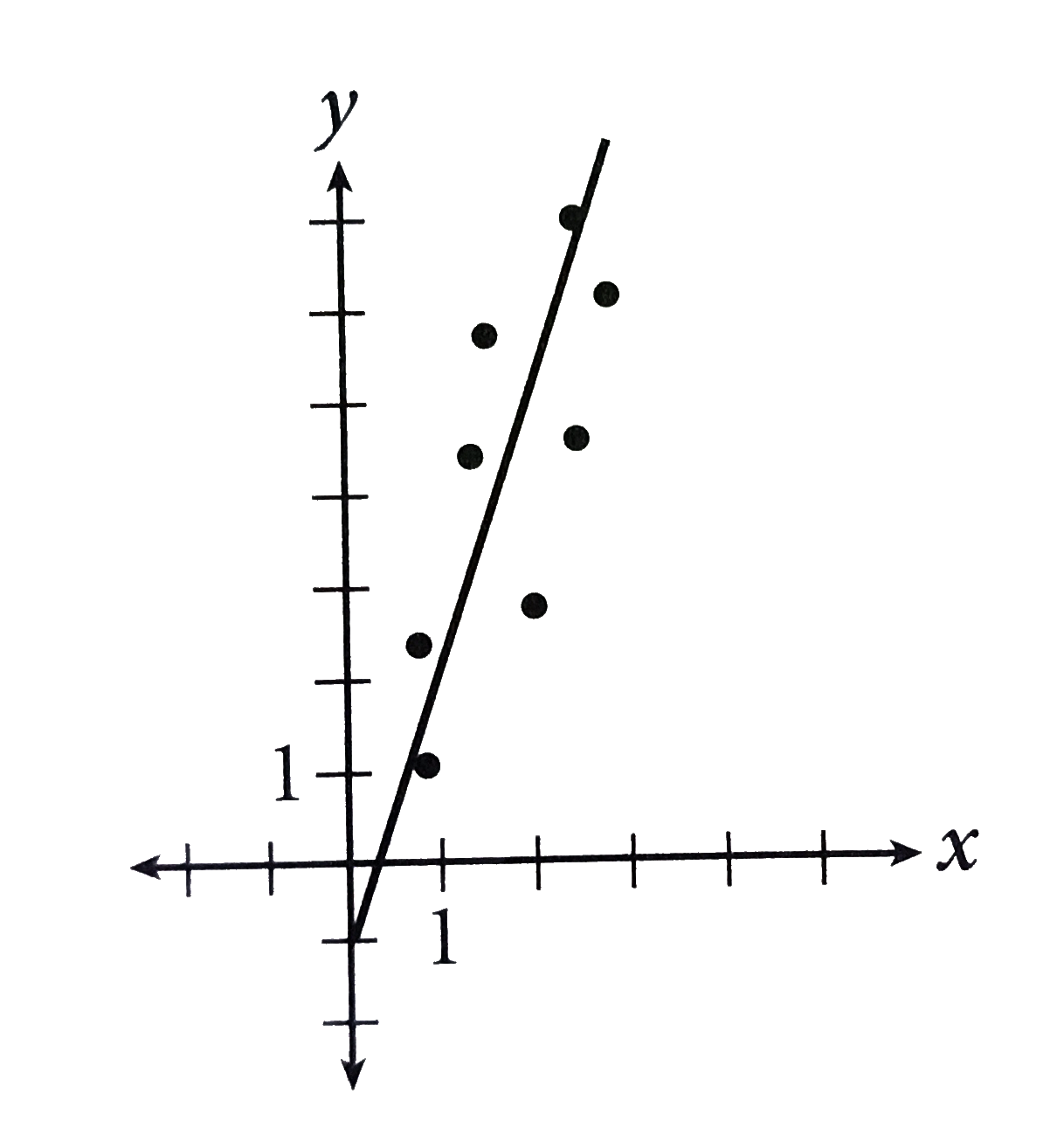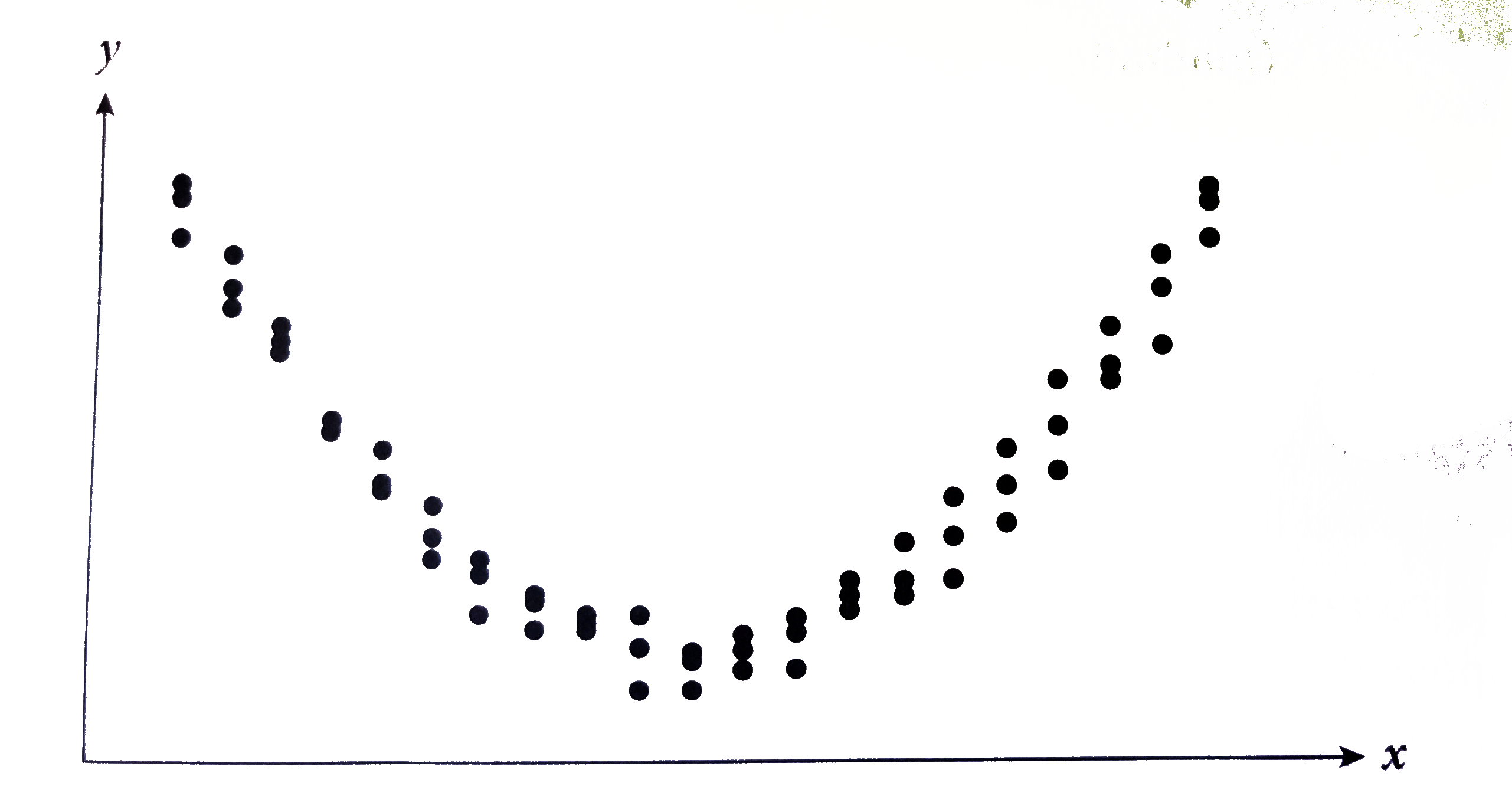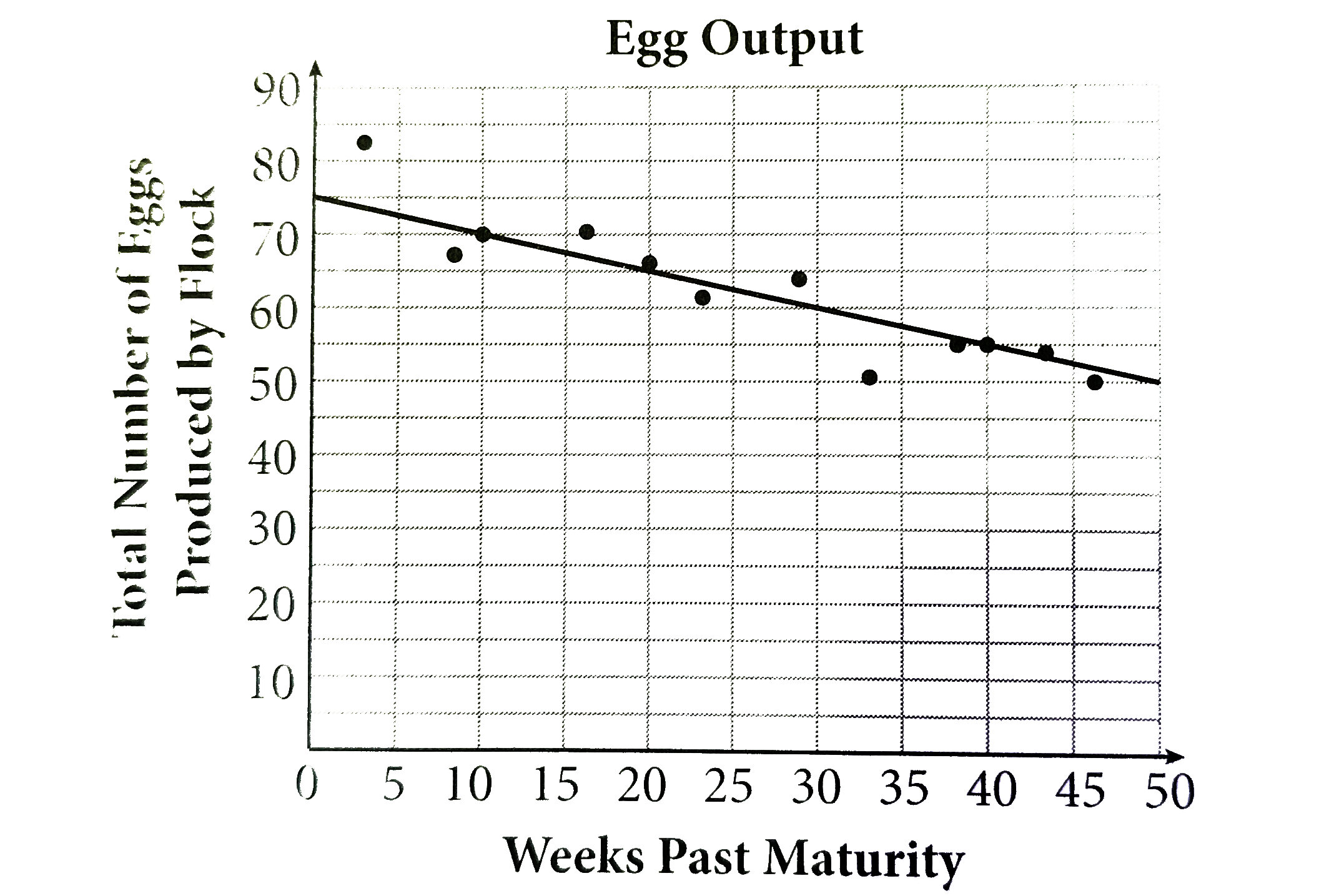Most chickens reach maturity and begin laying eggs at around 20 weeks of age. From this point forward, however, as the chicken ages,its eges its egg production decreases. A farmer was given a flock of 100 chickens (all of which were the same age) and asked to meaure daily egg output for the entire flock at random intervals starting at maturity until the chickens were 70 weeks old. The data are recorded in the scatteplot below and the line of best fit has been drawn.

How many times did the farmer's data differ by more than 5 eggs from the number of eggs predicted by the line of best fit ?
The correct Answer is:2
Examine the graph, including the axis labels and numbering. Each vertical grid line represents 5 eggs, so look to see how many data points are more than a complete grid space away from the line of best fit. Only 2 data points meet this requirement-the first data point at about 3 weeks and the one between 30 and 35 weeks, making 2 the correct answer.
Topper's Solved these Questions
- SCATTERPLOTSBOOK - KAPLANCHAPTER - SCATTERPLOTSEXERCISE - LINE OF BEST FIT
1 Videos
- SCATTERPLOTSBOOK - KAPLANCHAPTER - SCATTERPLOTSEXERCISE - SCATTERPLOT MODELING
1 Videos
- SCATTERPLOTSBOOK - KAPLANCHAPTER - SCATTERPLOTSEXERCISE - SCATTERPLOT MODELING
1 Videos
- SAT MATH: TIMING ANS SECTION MANAGEMENT STRATEGIESBOOK - KAPLANCHAPTER - SAT MATH: TIMING ANS SECTION MANAGEMENT STRATEGIESEXERCISE - TRY ON YOU OWN
5 Videos
- SYSTEMS OF LINEAR EQUATIONSBOOK - KAPLANCHAPTER - SYSTEMS OF LINEAR EQUATIONSEXERCISE - NUMBER OF POSSIBLE SOLUTIONS
1 Videos
Similar Questions

Which of the following equation corresponds to the line of best fit for the data set shown above ?
View Solution
Given that a,b, and c are constants and that a>0, which of the following is the equation for the line of best fit for the above scatterplot ?
View Solution
Given that a,b, and c are constants and that a>0, which of the following is the equation for the line of best fit for the above scatterplot ?
View SolutionIf 79x−16x=13+12, what is the value of x ?
View Solution{5x−3y=106y=kx−42
In the system of linear equations above, k represents a constant. If the system of equations has no solution, what is the value of 2k?
View Solutionकुछ कथन दिए गए है, जिसके आगे तीन निष्कर्ष I, II और III निकाले गए है। आपको विचार करना है कि कथन सत्य है चाहे वह सामान्यत ज्ञात तथ्यों में भिन्न प्रतीत होते हो। आपको निर्णय करना है की दिए गये कथनो में से कौन-सा निश्चित रूप से सही निष्कर्ष, यदि कोई हो, निकलता है। अपने उत्तर को निर्दिष्ट कीजिए।
कथन :
सभी चूजे पक्षी है। कुछ चूजे मुर्गियाँ है। मादा पक्षी अंडे देते है।
निष्कर्ष:
I. सभी पक्षी अंडे देते है।
II. कुछ मुर्गियाँ पक्षी है।
III. कुछ चूजे मुर्गियाँ नहीं है।
View Solutionअंडा देनेवाले मुर्गियों का आहार कैसे होना चाहिए ?
View SolutionMost chickens reach maturity and begin laying eggs at around 20 weeks of age. From this point forward, however, as the chicken ages,its eges its egg production decreases. A farmer was given a flock of 100 chickens (all of which were the same age) and asked to meaure daily egg output for the entire flock at random intervals starting at maturity until the chickens were 70 weeks old. The data are recorded in the scatteplot below and the line of best fit has been drawn.

Based on the line of bast fit, what is the predicted number of eggs that will be produced by the flock when it is 33 weeks past maturity ?
View Solutionअण्डे उत्पादन हेतु पाली जाने वाली मुर्गियों को क्या कहते हैं?
View SolutionWrite on the chicken breeds of egg layers.
View Solutionমুরগির মাংস ও ডিমের পুষ্টি মূল্য কী রুপ?
View Solutionমুরগির ডিম উৎপাদনকারী জাত বছরে ডিম পাড়ে-
View Solutionডিমে তা দেওয়ার প্রকৃতি অনুসারে মুরগির প্রকারভেদ গুলি কী কী?
View Solutionমুরগির ডিমের মধ্যে কোন কোন খনিজ মৌল থাকে?
View SolutionThe breed of chicken reared for eggs is called -
View Solution
